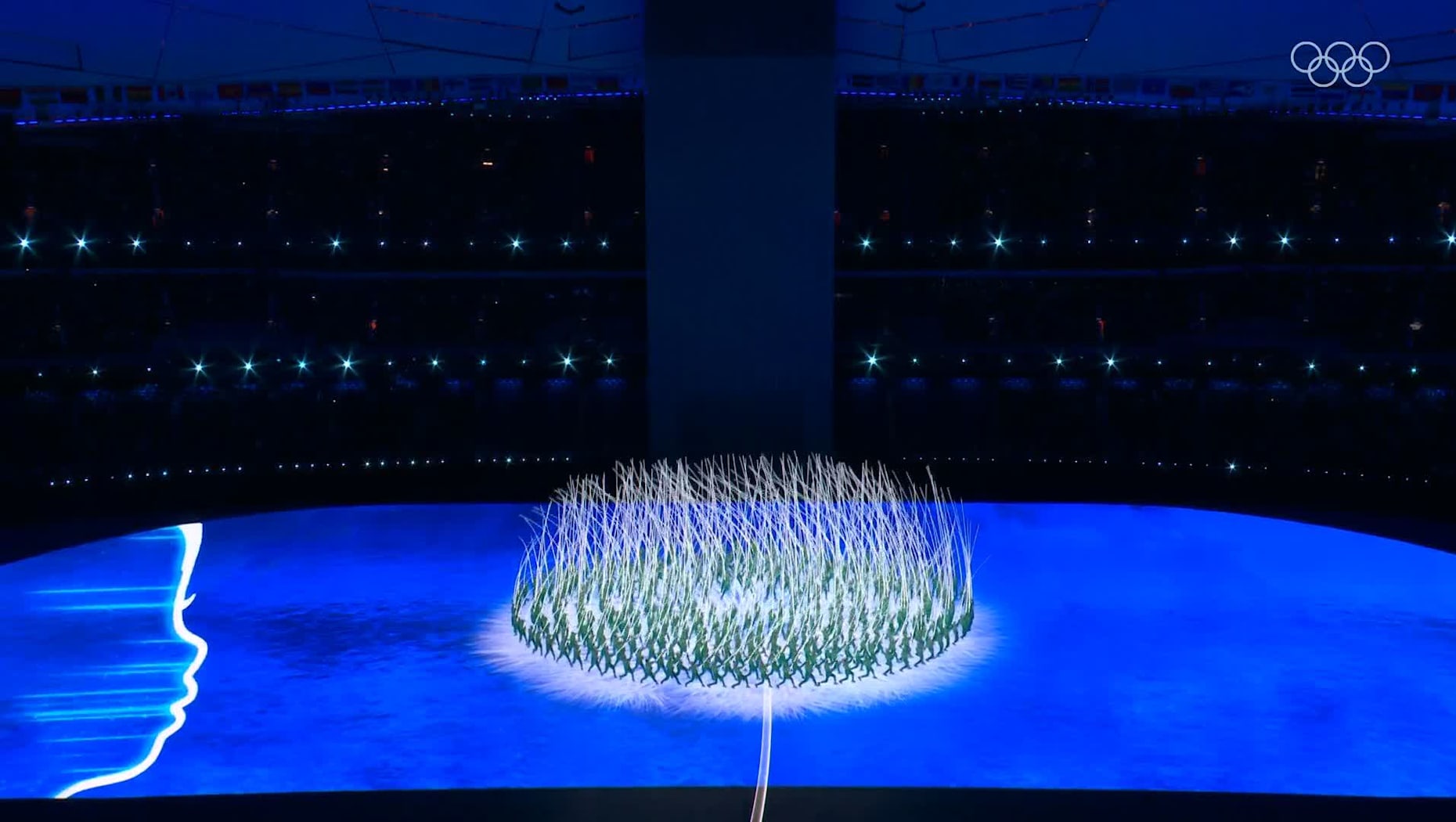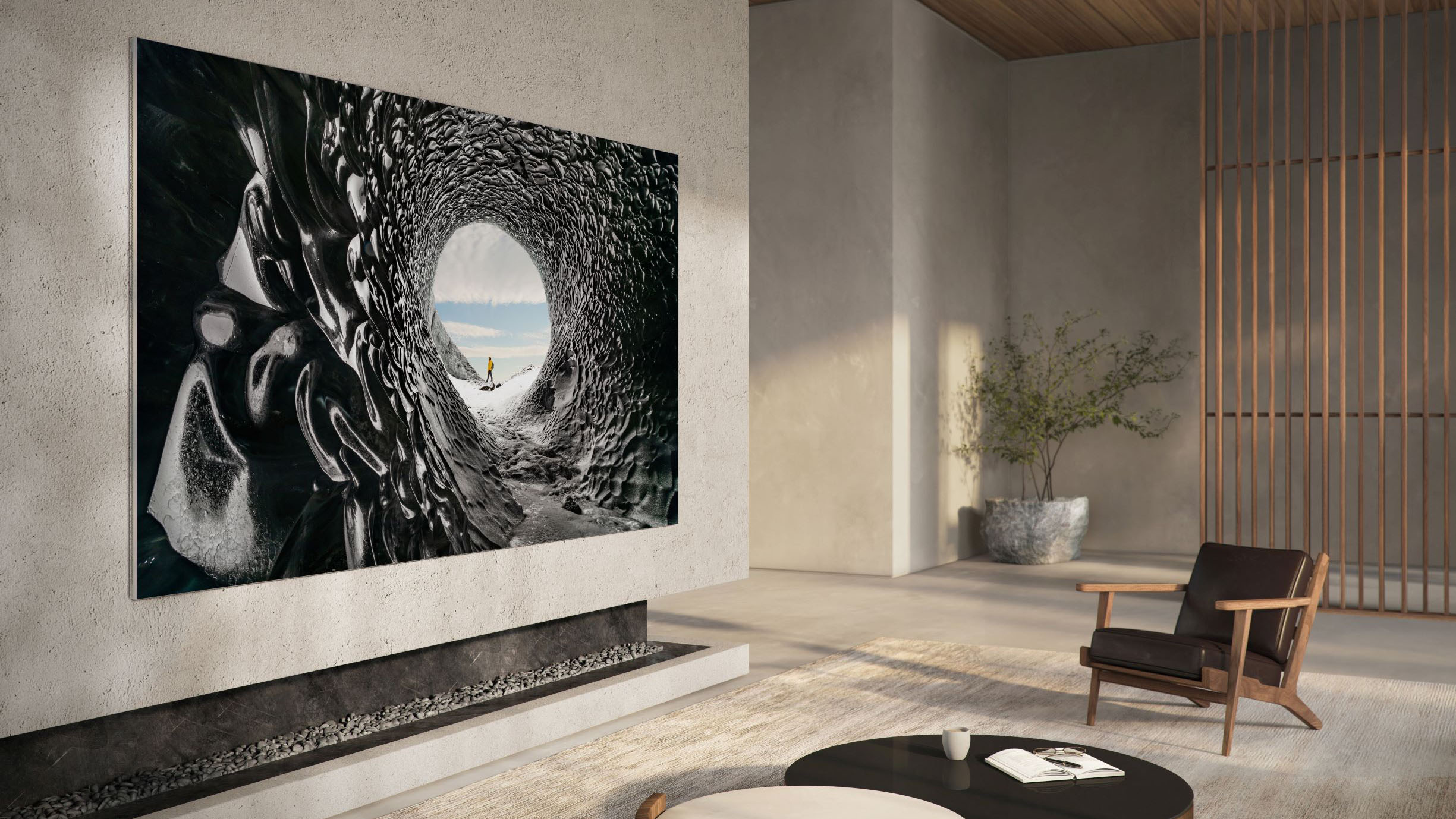
The Olympics has been hailed as one of the greatest sporting events on Earth, so it’s only fitting that they are presented on a screen that matches the Games’ reputation.
To that end, the world’s largest LED screen was unveiled at the Winter Olympics' opening ceremony in Beijing today that’s 10,552 square meters big and uses 40,000 LED modules according to the Global Times.
The screen in question was used as the main stage of the opening ceremony and was built by the China Academy of Launch Vehicle (CALT), which is China's largest developer and producer of carrier rockets (we don't get the connection, either). According to the firm, the screen offers “a visual feast even better than 8K resolution” and claims that it’s the largest LED screen of its kind ever made.
At that size, it’s never going to fit inside our homes - unless, of course, you plan on living inside Beijing’s National Stadium (a.k.a. "the Bird's Nest") where the opening ceremony was held. For now, we’ll just have to settle for the 1.5-meter screen sitting in our living room.
How was it built?
So the world's largest LED display comes with a bit of an asterisk because, obviously, this isn't just one LED screen, but rather many screens all interconnected.
The reason LED displays are chosen over OLED is because of their reliability and reduced cost - OLED simply is more expensive to manufacture at scale and isn't as reliable in these massive configurations. LED screens are also brighter than OLED, which is important when you're lighting up an entire arena.
How bright are we talking? Well, commercial LED displays like the ones that are being used in the Olympic Opening Ceremony are between 4,000 and 10,000 nits. Considering that even the brightest consumer QLED TVs only reach between 2,000 and 3,000 nits, these commercial displays are significantly brighter than what we see on our home TVs.
Get daily insight, inspiration and deals in your inbox
Sign up for breaking news, reviews, opinion, top tech deals, and more.
That being said, each 'tile' in this display is likely only one-to-two feet across, which means there are tens of thousands being used to complete the display - a real feat of engineering deserving of its own gold medal.

Analysis: What’s the biggest TV you can buy?
OK, so ruling out the National Stadium’s new LED screen, what other options does a well-off, tech-hungry cinephile have? Quite a few, to be honest.
Of course, the one option that’s the most distinct is the new Samsung MicroLED TVs that made their debut at CES 2022 in 89, 101, and 114-inch sizes. These big-screen displays should be able to fill a wall of your living room for the low, low price of $80,000 (around £59,500 or AU$113,500).
Beneath Samsung's MicroLED TVs are the extra-large OLED TVs from LG that were available in 2021 in 83-inch sizes and will soon reach 97 inches across, and oversized LED-LCD TVs like TCL's XL collection that span up to 85 inches.
While most of us would love a TV of that size, their price tags are likely still a bit too steep for that vast majority of us. Fortunately, we've seen several 75-inch TVs drop under two grand in the last two years, with some even dropping under one grand for shopping events like Black Friday, Cyber Monday and Amazon Prime Day.
Long story short? Beijing's 10,000 meter display might be out of reach for us, but chances are good that a new 75-inch TV isn't.
- Not sure where to start? Check out our guide to the best 75-inch 4K TVs to buy in 2022
Nick Pino is Managing Editor, TV and AV for TechRadar's sister site, Tom's Guide. Previously, he was the Senior Editor of Home Entertainment at TechRadar, covering TVs, headphones, speakers, video games, VR and streaming devices. He's also written for GamesRadar+, Official Xbox Magazine, PC Gamer and other outlets over the last decade, and he has a degree in computer science he's not using if anyone wants it.
